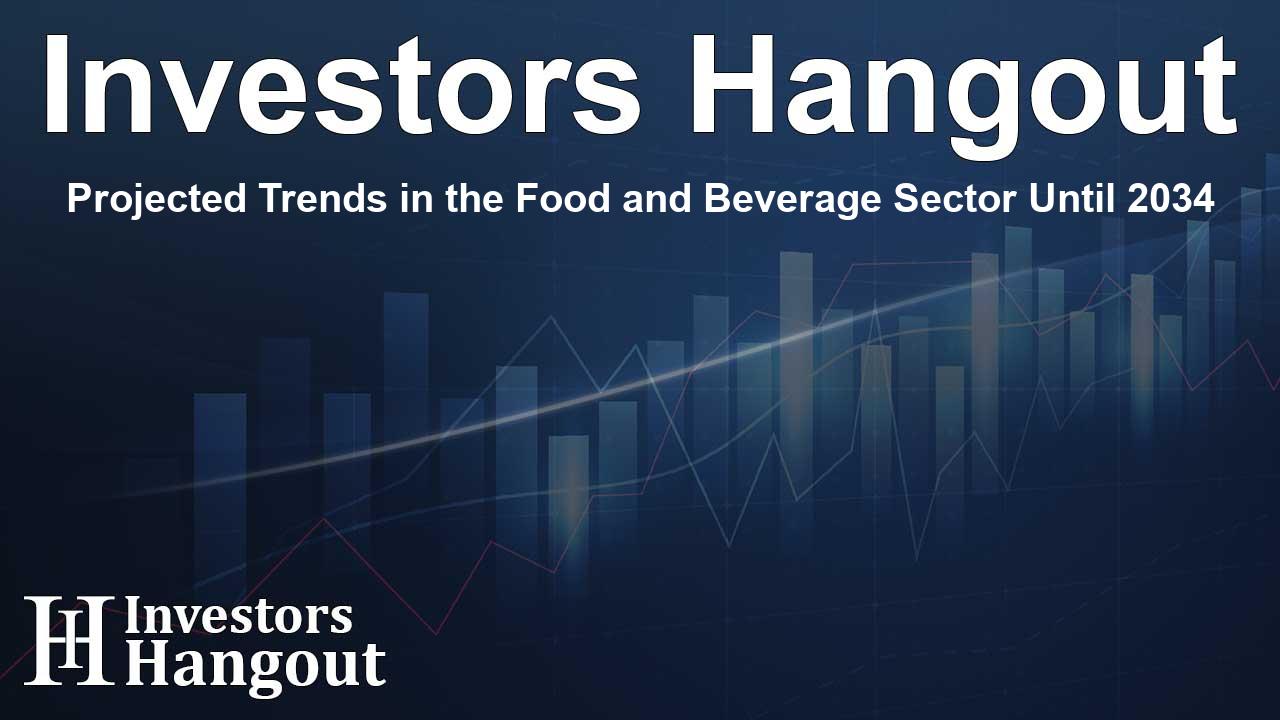Projected Trends in the Food and Beverage Sector Until 2034

Future Growth of the Food and Beverage Industry
The global food and beverage sector is set for remarkable expansion over the next decade as consumer preferences evolve and demand for convenient, health-conscious products continues to rise. With an increasing emphasis on sustainability, both consumers and industries are shifting towards plant-based and functional meals. This transformation is supported by technological advancements that enhance food distribution and production processes, promising to increase productivity and create innovative products. The industry's adaptability to changing market dynamics further underscores this anticipated growth.
Key Markets Driving Industry Growth
Several significant markets are expected to shape the food and beverage industry in the coming years. One noteworthy area is the animal-free dairy sector, projected to capture attention with a substantial market size of USD 26.77 billion by 2024 and a remarkable compound annual growth rate (CAGR) of 11.0% through 2034. The rising awareness regarding the environmental and ethical ramifications of conventional dairy farming has led consumers toward alternatives that are plant-based or lab-grown.
Exploring Plant-Based Alternatives
The seaweed protein market is another area experiencing rapid growth. Anticipated to reach USD 733.1 million in 2024, it is forecasted to grow at an impressive CAGR of 12.3%. The demand for sustainable and plant-based protein sources is the central driver for this sector. Similarly, the global plant-based milk market is expected to expand from USD 20.23 billion in 2024, with a CAGR of 8.6%, as health-conscious consumers embrace alternatives to traditional dairy products.
Emerging Trends in Nutritional Products
The A2 dairy products market is generating significant interest. With a projected market size of USD 2.1 billion in 2024 and a staggering CAGR of 24.8%, it attracts consumers seeking the purported health advantages of A2 milk, which is considered easier to digest compared to A1 milk. This shift in dietary preferences demonstrates a growing appetite for specialized nutrition options.
Variation in Market Dynamics
In addition, the feed prebiotics market, while smaller at USD 2.87 million in 2024, is expected to grow steadily at a CAGR of 5.4%, reflecting heightened environmental considerations across industries. Meanwhile, the North American frozen bakery products market anticipates a size of USD 7.28 billion by 2024, projecting a growth rate of 8.6%. The demand for diverse, convenient food options continues to rise, fueled by changing consumer lifestyles.
Cultural Trends and Consumer Interests
The U.S. baby food market is also poised for expansion, with a size of USD 23.59 billion expected in 2024 and a CAGR of 6.8%. This growth mirrors shifts towards outsourcing and flexible operations in the food sector. In response to evolving dining preferences, the personalized nutrition market, valued at USD 19.6 billion in 2024, is set to grow at a rate of 11.5%. Furthermore, the ethnic food market, expected to reach USD 42.9 billion with a CAGR of 9.0%, reflects increasing cultural appreciation and demand for unique culinary experiences.
Promising Opportunities Ahead
As global cuisines gain traction, the spices and seasonings market is also on an upward trajectory, expected to grow at a CAGR of 5.8%. The rising desire for authentic flavors and healthier food options underlines the significance of this sector within the broader food and beverage industry. Brands focusing on innovation and environmental sustainability will likely benefit from these changing dynamics.
Conclusion
The future of the food and beverage industry is undeniably bright, driven primarily by shifts in consumer behavior and a growing emphasis on health, sustainability, and convenience. Businesses that recognize and adapt to these trends will find ample opportunity for growth and success in the coming decade.
Frequently Asked Questions
What factors are contributing to the growth of the food and beverage industry?
Shifting consumer preferences towards health and sustainability, along with advancements in technology for production and distribution, are key drivers of growth.
What trends are shaping the future of the market?
Increasing demand for plant-based products, personalized nutrition, and cultural culinary experiences are significantly influencing market dynamics.
How fast are plant-based alternatives expected to grow?
Markets such as plant-based milk are projected to grow at a CAGR of over 8%, driven by health awareness and concerns about traditional dairy farming.
Which markets will dominate in the coming years?
Key markets expected to lead include plant-based dairy, personal nutrition, and ethnic foods, reflecting broader consumer interests in health and diversity.
How can businesses prepare for these changes?
Businesses should invest in understanding evolving consumer trends, innovate their product offerings, and embrace sustainability to thrive in this changing landscape.
About Investors Hangout
Investors Hangout is a leading online stock forum for financial discussion and learning, offering a wide range of free tools and resources. It draws in traders of all levels, who exchange market knowledge, investigate trading tactics, and keep an eye on industry developments in real time. Featuring financial articles, stock message boards, quotes, charts, company profiles, and live news updates. Through cooperative learning and a wealth of informational resources, it helps users from novices creating their first portfolios to experts honing their techniques. Join Investors Hangout today: https://investorshangout.com/
Disclaimer: The content of this article is solely for general informational purposes only; it does not represent legal, financial, or investment advice. Investors Hangout does not offer financial advice; the author is not a licensed financial advisor. Consult a qualified advisor before making any financial or investment decisions based on this article. The author's interpretation of publicly available data shapes the opinions presented here; as a result, they should not be taken as advice to purchase, sell, or hold any securities mentioned or any other investments. The author does not guarantee the accuracy, completeness, or timeliness of any material, providing it "as is." Information and market conditions may change; past performance is not indicative of future outcomes. If any of the material offered here is inaccurate, please contact us for corrections.